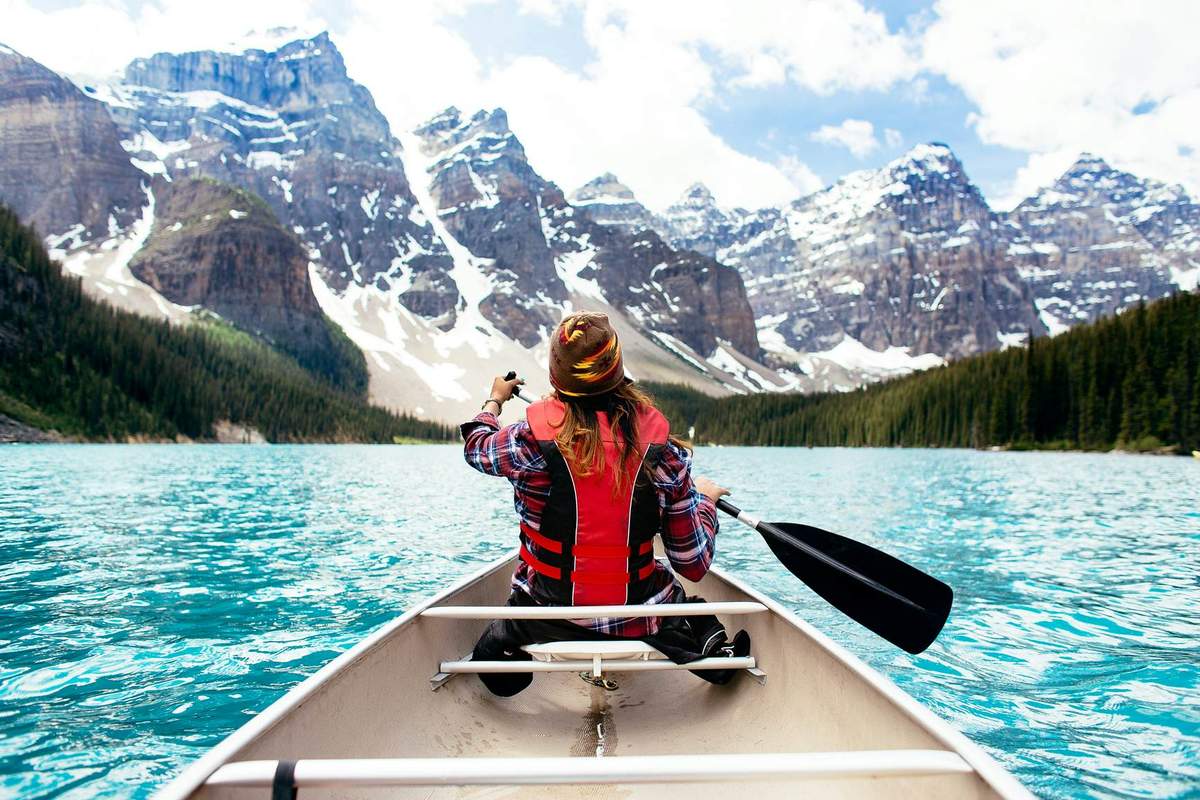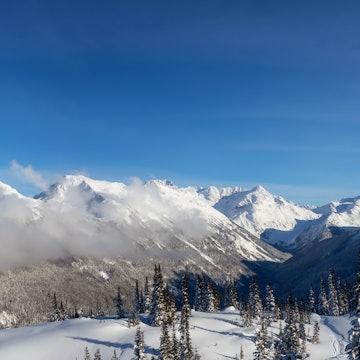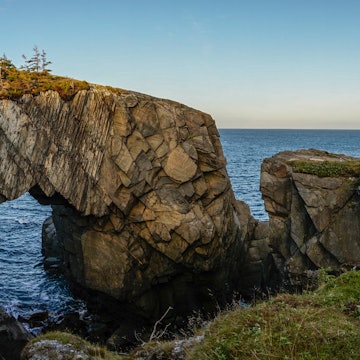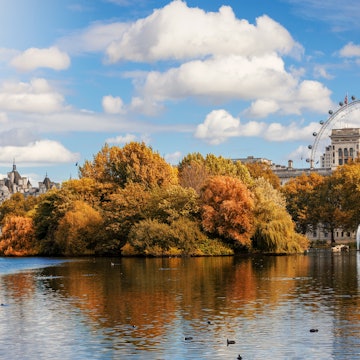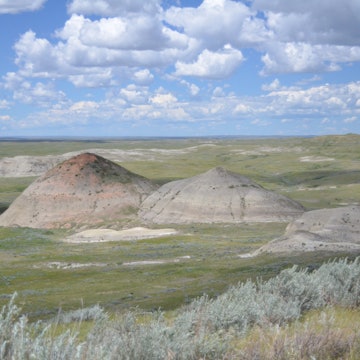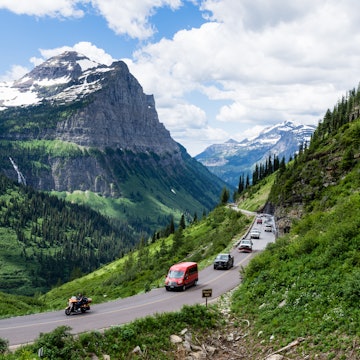
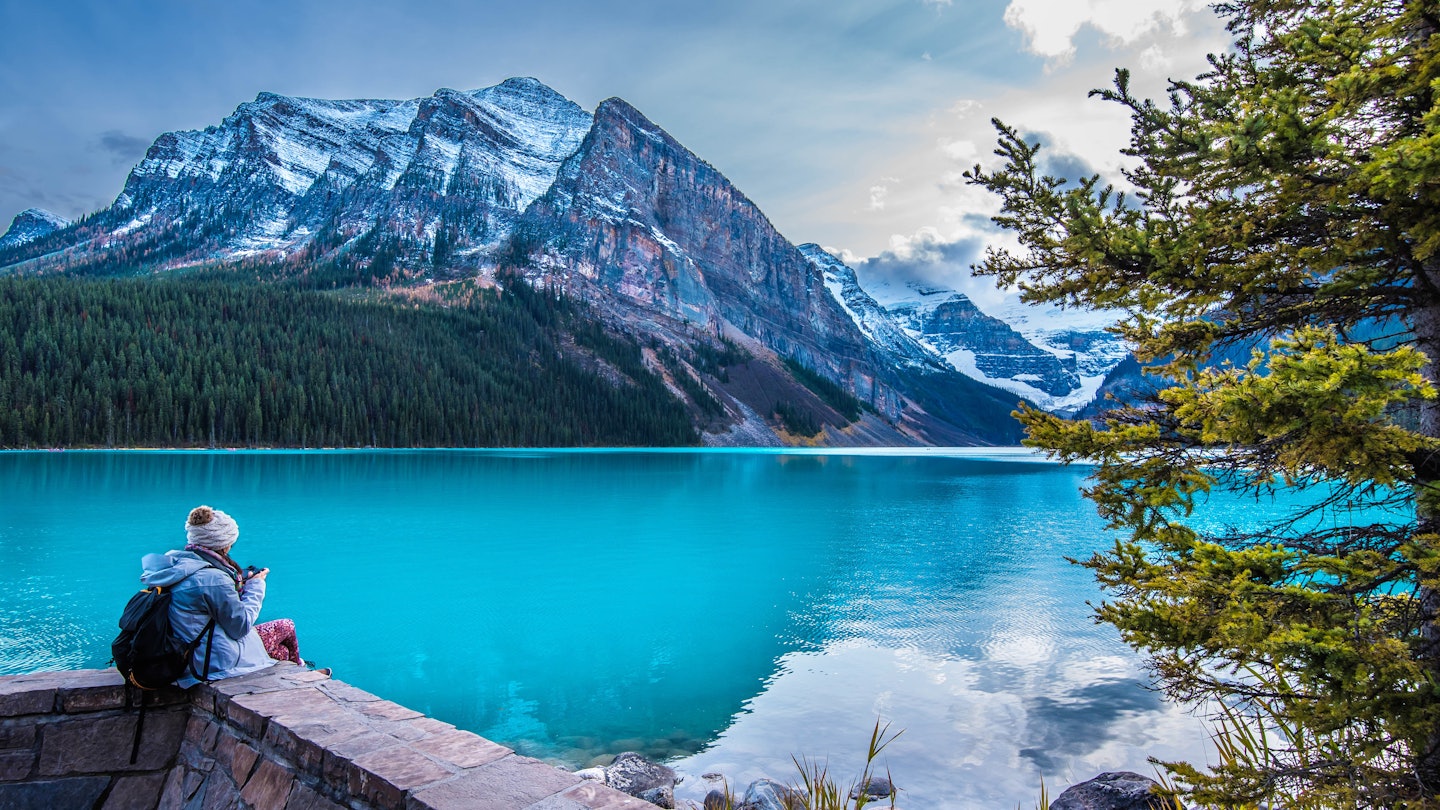
From Banff to Kluane, here's our guide to Canada's best national parks © Hue Chee Kong / Shutterstock
While Europe protects ancient monuments, Canada safeguards its national parks, vast, lightly populated areas filled with the kind of elemental landscapes that define the nation.
Canada’s first national park, Banff, inspired by the Rocky Mountains’ hot springs and pioneering railway construction, was founded in 1885. Just over 25 years later, with the fledgling park network numbering half-a-dozen, the government formed Parks Canada (originally known as the “Dominion Parks Branch'') as the world’s first umbrella national park organization. Today there are 48 national parks plus an additional 171 National Historic Sites that form part of a growing and increasingly varied environmental network. Five new parks have been added since 2015 and another three are earmarked for inclusion in the near future. Here's our guide to the best of them.
1. Banff, Alberta
Best mountain park
Best known today for its skiing, hiking and water-based activities, Banff owes its existence to hot water and trains. This is where tourism in Canada first took root in the 1880s inspired by the exploitation of the natural spring water that flowed out of Sulphur Mountain and the construction of the nation’s first cross-continental railway.
Due to its early foundation, Banff is far and away the most developed and popular Canadian park with an 8000-strong townsite, three ski areas, lake cruises, and an abundance of hotels and restaurants. While some decry what they see as its “over-commercialization”, it’s still refreshingly easy to get lost hiking in the Rocky Mountain backcountry or disappear on skis to one of its remote off-the-grid lodges.
Want to go hiking? Here's our guide to the best trails in Canada

2. Pacific Rim, BC
Best park for surfing
A narrow but dramatic strip of wave-whipped beaches, brooding forests, and weather-beaten sea-stacks on the west coast of Vancouver Island, Pacific Rim is split into three units, each with its own specialist activity:
The largely roadless West Coast Trail Unit is bisected by one of Canada’s most famous long-distance hikes that incorporates 75km (47 miles) of beachcombing, ladder-climbing, and rock-hopping. Access is controlled and hiking reservations must be made in advance.
The Broken Group Islands Unit in Barkley Sound is a wilderness archipelago that’s only reachable by boat or on multiday kayaking excursions.
Accessible by road and attracting 95% of the park’s visitors is the northern Long Beach Unit, sandwiched between the two mellow tourist towns of Tofino and Ucluelet and revered for its string of surfing beaches and tangerine sunsets.
3. Auyuittuq, Nunavut
Best park in the Arctic Circle
Nunavut’s parks are like frontiers on the frontier with only rudimentary visitor facilities and limited access points. However, if you’re bold, brave, and determined to get to grips with Canada’s inhospitable northern fringes, gravitate to Baffin Island where Auyuittuq National Park offers one of Canada’s finest wilderness hikes. The Akshayuk Pass route is a sketchily marked 100km (62-mile) “trail” that follows a broad open valley, climbing to a height of 500m (1640ft) and crossing the Arctic Circle along its course. Highlights include views of flat-topped Mt Asgard, where James Bond (depicted by American stuntman Rick Sylvester) famously base-jumped off a cliff in his skis in the 1977-film The Spy Who Loved Me.

4. Fundy, New Brunswick
Best park for beachcombing
New Brunswick’s first national park was inaugurated in 1948 thanks to its ginormous tides (the world’s highest) when water levels oscillate between 12 and 16m (39 to 52ft) in the Bay of Fundy. When the sea water recedes, the region’s broad beaches reveal a patchwork of shimmering mudflats, teeming rock pools, colonies of crustaceans, and other little seen marine secrets.
Behind the uneven shoreline, characterized by its irregularly eroded sandstone cliffs, the heavily wooded park is dotted with pretty waterfalls and laced with trails suited to hiking and biking. You can also wield a nine-iron on a golf course, stay at a retro 1950s motel, and swim in a heated outdoor saltwater pool for a milder alternative to the chilly ocean.
5. Glacier, BC
Best park for backcountry skiing
Often confused with its more famous namesake across the border in the US, Glacier was an early addition to Canada’s national park network, designated in 1886 less than a year after Banff.
Protecting over 120 glaciers and legendary for its backcountry ski-touring and mountaineering, the park registers abnormally heavy annual snowfall (as much as 23m/75ft) which, in turn, converts the vertiginous slopes of the Selkirk and Purcell Mountains into one of the world's most active avalanche areas.
For this reason, most backcountry activities, including skiing, caving, and climbing, are regulated and you must register with park wardens before venturing out. Known as the birthplace of North American mountaineering, it remains a heavenly escape for modern snow-sport extremists.
Access to the region is via the Trans-Canada Hwy which bisects the park east-west summiting 1130m (3707ft) Rogers Pass, a national historic site and one of Canada’s most beautiful mountain passes.

6. Bruce Peninsula, Ontario
Best park for water activities
Around three hours' drive northwest of Toronto, the Bruce Peninsula is made up of a limestone outcrop at the northern end of the Niagara Escarpment that juts like a bent finger into North America’s Great Lakes separating the cool waters of Georgian Bay from warmer Lake Huron.
While the national park itself is not large, it squeezes a lot of attractions into its 154 sq km (59 sq miles), many of which are water based. There’s an ethereal "grotto" (water-filled cave) to explore, plentiful kayaking opportunities and ample chances to swim in either warm Lake Huron, or cold but clear Georgian Bay. The peninsula’s green woodlands are intersected by a short shore-hugging section of the 800km (497-mile) Bruce Trail.
7. Prince Edward Island, PEI
Best park for literary landmarks
Eastern Canada’s most popular national park, with around 750,000 annual visitors, is a diminutive affair that manages to squeeze an intense mix of croissant-shaped sand dunes and trailblazing literary sights into its 27 sq km (10 sq miles).
The beaches and dunes are protected as an important nesting ground for the endangered piping plover, a sparrow-sized shorebird with a soft whistling call, while a few blocks inland you can satisfy your more erudite tendencies with a visit to the farm and house that were the inspiration for the 1908 novel, Anne of Green Gables by Lucy Maud Montgomery, Canada’s most enduring literary icon.

8. Gros Morne, Newfoundland
Best park for geological exploration
Students of plate tectonics and continental drift can enrich their geological knowledge amid the unique topography of Gros Morne’s barren "tablelands", an eerie flat-topped massif featuring exposed rock from deep within the earth’s crust.
For non-scientists, advanced geological qualifications are not required to appreciate the beauty of the park’s deep-cut fjords, blustery headlands, vertiginous cliffs, and powerful waterfalls. Whales breach in the surrounding seas and shipwrecks and beaches dot the coast.
9. Jasper, Alberta
Best park for wildlife-viewing
Another Rocky Mountains park with a townsite and a ski resort, Jasper is a larger, steelier, more northerly continuation of Banff. It too has shops and restaurants, a gondola to the top of a nearby mountain (the Whistlers) and a spirit-reviving hot springs. But, receiving less than half of Banff’s annual visitor count, Jasper is a much more suitable place to see big fauna in its natural habitat. Elks graze on railway tracks, bears hunt for berries in subalpine forest, and wolves and cougars occasionally prowl the park’s central valleys in the winter.
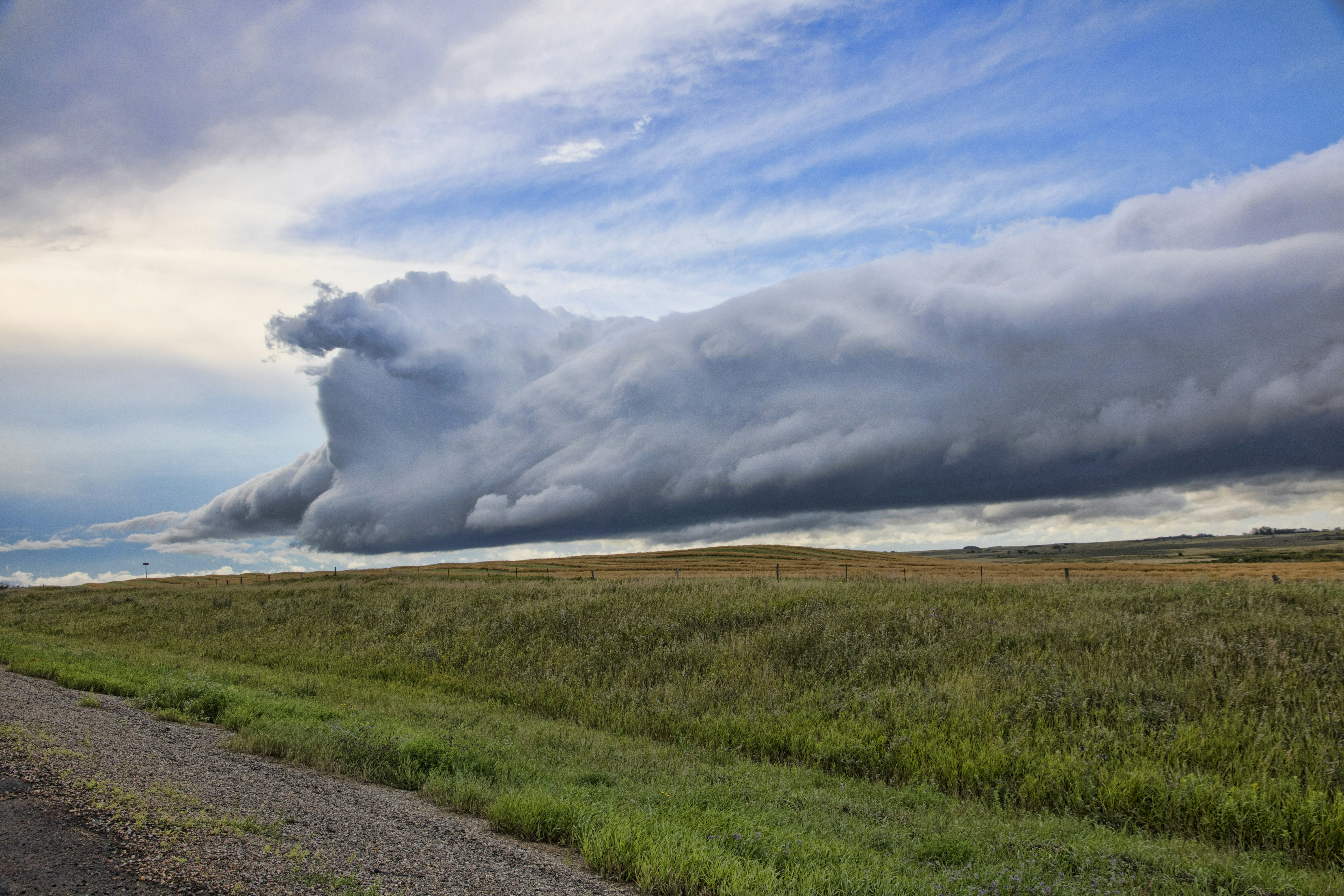
10. Grasslands, Saskatchewan
Best prairie park
Comprising a sea of grass and prairie where treeless hills clash with big blue skies, Grasslands is one of two national parks in Saskatchewan. Anchored by a visitor center located in the tiny settlement of Val Marie, 350km southwest of Regina, the park’s harsh, semi-arid landscapes are the habitat for two important animal species: black-tailed prairie dogs and plains bison. The latter were successfully reintroduced into the park in 2005.
The easiest way to see both is on the self-guided Grassland Ecotur Scenic Drive that incorporates seven points of interest along its 80km (50 mile) course including old homesteader cabins, flat-topped buttes, and a couple of short interpretive walks.
11. Cape Breton Highlands, Nova Scotia
Best park for a road trip
While many Canadian national parks have no roads at all, Cape Breton Highlands in the Maritimes makes road-tripping easy courtesy of the Cabot Trail Scenic Travelway, a 298km-long (185-mile) "ring road" that circumnavigates the island’s northern reaches dipping into tiny Acadian fishing villages en route. Around one-third of the road traces the edge of the national park where you can absorb primordial land-meets-ocean scenery embellished by dramatic highlands, steep cliffs and a broad tundra-esque plateau. The big show-stopping hike is the 8.2km (5-mile) round-trip Skyline Trail from where walkers can look down on ocean, headlands and the asphalt Cabot Trail rendered in miniature.

12. Forillon, Québec
Best park for coastal hikes
Protruding into the Gulf of St Lawrence on the eastern extremity of Québec’s Gaspé Peninsula, Forillon's crested mountains plunge dramatically into the Atlantic with rugged bluffs overlooking waters replete with spouting whales. Cliff-top trails well-ventilated by blustery winds characterize the peninsula’s precipitous north coast, while the south coast is more sheltered and secluded, harboring beaches and salt marshes where rare ringlet butterflies thrive. Just as birds and sea mammals dominate the coastal wildlife; porcupine, deer, moose, foxes, and bears inhabit the forested slopes of the park's interior.
13. Nahanni, Northwest Territories
Best park for wilderness kayaking
You’ll need to jump on a floatplane to see the unsullied glories of Nahanni in the Northwest territories, a vast roadless national park, acclaimed for its wilderness rivers that curl around the MacKenzie Mountains through deep canyons and extensive karst landscapes riddled with interconnecting caves. With zero population and no services, visits here are pricey but rewarding once-in-a-lifetime trips best organized out of bases in Fort Simpson or Whitehorse. The multiday guided paddling excursions on the South Nahanni River are spectacular.

14. Kluane, Yukon
Best wilderness park
Combined with the adjacent Wrangell-St Elias national park in Alaska, Kluane in the Yukon makes up the largest protected wilderness area on Earth, a veritable "empire of mountain and ice" that includes Canada’s highest peak, Mt Logan (5959m/19,550ft) and an extreme backcountry of giant icefields, remote unclimbed mountains, and grizzly bears who have never met a human.
To get a glimpse of a small portion of Kluane’s supersized wonders, track the Alaska and Haines Highways north of the BC-Yukon border where two dozen trailheads mark the gateway to a vast array of intimidating landscapes offering everything from one-hour rambles to highly advanced multiday adventures.
15. Gwaii Haanas, BC
Best park for Indigenous culture
This extensive national park, and UNESCO World Heritage site, encompasses elongated Moresby Island and 137 smaller islands that cluster around its southern tail. It combines a time-capsule look at abandoned villages of the Haida First Nation with hot springs, windswept natural beauty, and some of Canada’s best sea-kayaking. Archaeological finds have revealed more than 500 ancient Haida sites, including villages and burial caves throughout the islands. The most famous village is SGang Gwaay (Ninstints) on Anthony Island, where lines of storm-aged totem poles stare mysteriously out to sea.
Planning tip: Advance planning is required as the number of visitors entering the park each day is limited. The easiest way is to take a guided trip with a licensed operator; access to the park is by boat or floatplane only.
Keep planning your trip to Canada:
Save this guide for the best places to visit in Canada
Traveling on a budget? We have tips for you
Check whether you need a visa to visit Canada
And now get planning the ultimate Canadian road trip






